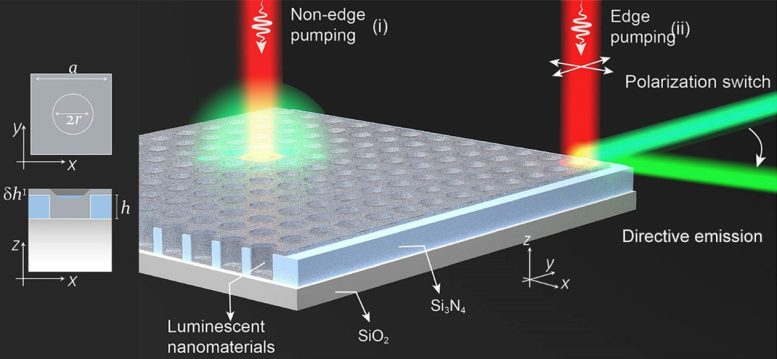Researchers at the National University of Singapore have introduced “supercritical coupling,” a groundbreaking concept that greatly improves photon upconversion efficiency. By leveraging the phenomena of “bound states in the continuum” (BICs), the team has surpassed traditional limitations, enabling light to be trapped indefinitely in open structures. This advancement, which showcases an eight-order of magnitude increase in upconversion luminescence, has profound implications for the control of light emission at the nanoscale, potentially impacting quantum photonics and other areas of photonic devices. Published in Nature, this work signals a paradigm shift in nanophotonics and opens new avenues for research.
Scientists at the National University of Singapore (NUS) have introduced a groundbreaking concept known as “supercritical coupling,” which significantly boosts the efficiency of photon upconversion. This innovation not only overturns existing paradigms but also opens a new direction in the control of light emission.
Photon upconversion, the process of converting low-energy photons into higher-energy ones, is a crucial technique with broad applications, ranging from super-resolution imaging to advanced photonic devices. Despite considerable progress, the quest for efficient photon upconversion has faced challenges due to inherent limitations in the irradiance of lanthanide-doped nanoparticles and the critical coupling conditions of optical resonances.
The concept of “supercritical coupling” plays a pivotal role in addressing these challenges. This fundamentally new approach, proposed by a research team led by Professor LIU Xiaogang from the NUS Department of Chemistry and his collaborator, Dr Gianluigi ZITO from the National Research Council of Italy, leverages on the physics of “bound states in the continuum” (BICs). BICs are phenomena that enable light to be trapped in open structures with theoretically infinite lifetimes, surpassing the limits of critical coupling. These phenomena are different from the usual behavior of light.
Novel Approaches and Experimental Validation
By manipulating the interaction between dark and bright modes within these structures, similar to the classical analogue of electromagnetically induced transparency, the researchers not only enhanced the local optical field but also precisely controlled the direction of light emission.
Their findings have been published in the journal Nature.

Figure illustrates the principle of “supercritical coupling” and directive upconversion emission through supercritical edge BIC coupling. It shows the layout of the photonic-crystal nanoslab with unit cell geometry and demonstrates collimated upconversion achieved through supercritical coupling tuned at the edge. Credit: Nature
The experimental validation of supercritical coupling marks a significant leap forward, demonstrating an eight-order of magnitude increase in upconversion luminescence. The experimental setup involves a photonic-crystal nanoslab covered with upconversion nanoparticles. These nanoparticles serve as microscale sources and lasers. The unique properties of BICs, characterized by negligible light dispersion and microscale dimensions of the light spots, were harnessed to achieve precision in focusing and directional control of the emitted light. This opens up new avenues for controlling the state of the light.
Prof Liu said, “This breakthrough is not only a fundamental discovery, but represents a paradigm shift in the field of nanophotonics, altering our understanding of light manipulation at the nanoscale. The implications of supercritical coupling extend beyond photon upconversion and offer potential advances in quantum photonics and various systems based on coupled resonators.”
“As the research community grapples with the implications of this work, the door stands open to a future where light, one of the most fundamental elements of our universe, can be controlled with unparalleled precision and efficiency,” added Prof Liu.
Reference: “Directive giant upconversion by supercritical bound states in the continuum” by Chiara Schiattarella, Silvia Romano, Luigi Sirleto, Vito Mocella, Ivo Rendina, Vittorino Lanzio, Fabrizio Riminucci, Adam Schwartzberg, Stefano Cabrini, Jiaye Chen, Liangliang Liang, Xiaogang Liu and Gianluigi Zito, 21 February 2024, Nature.
DOI: 10.1038/s41586-023-06967-9


